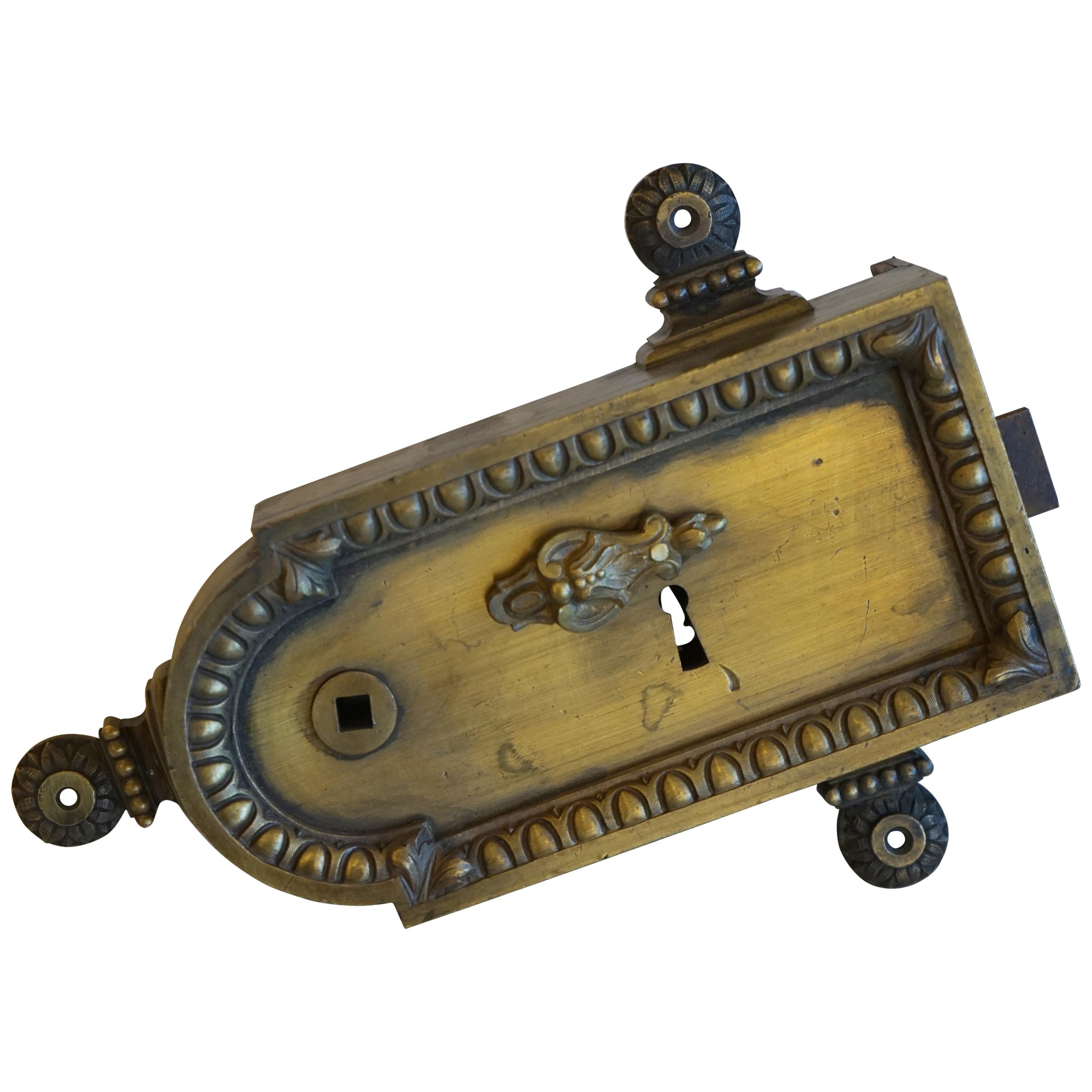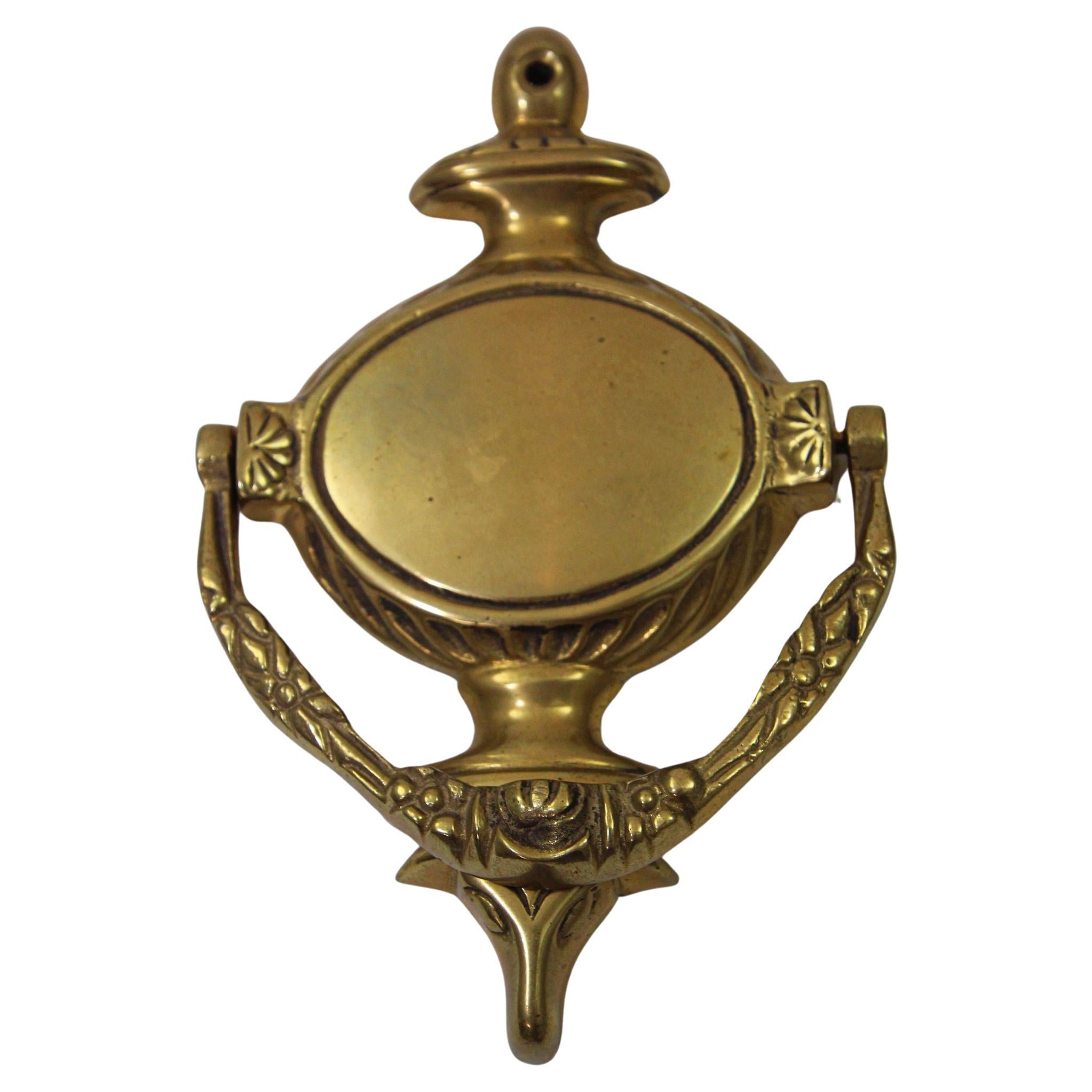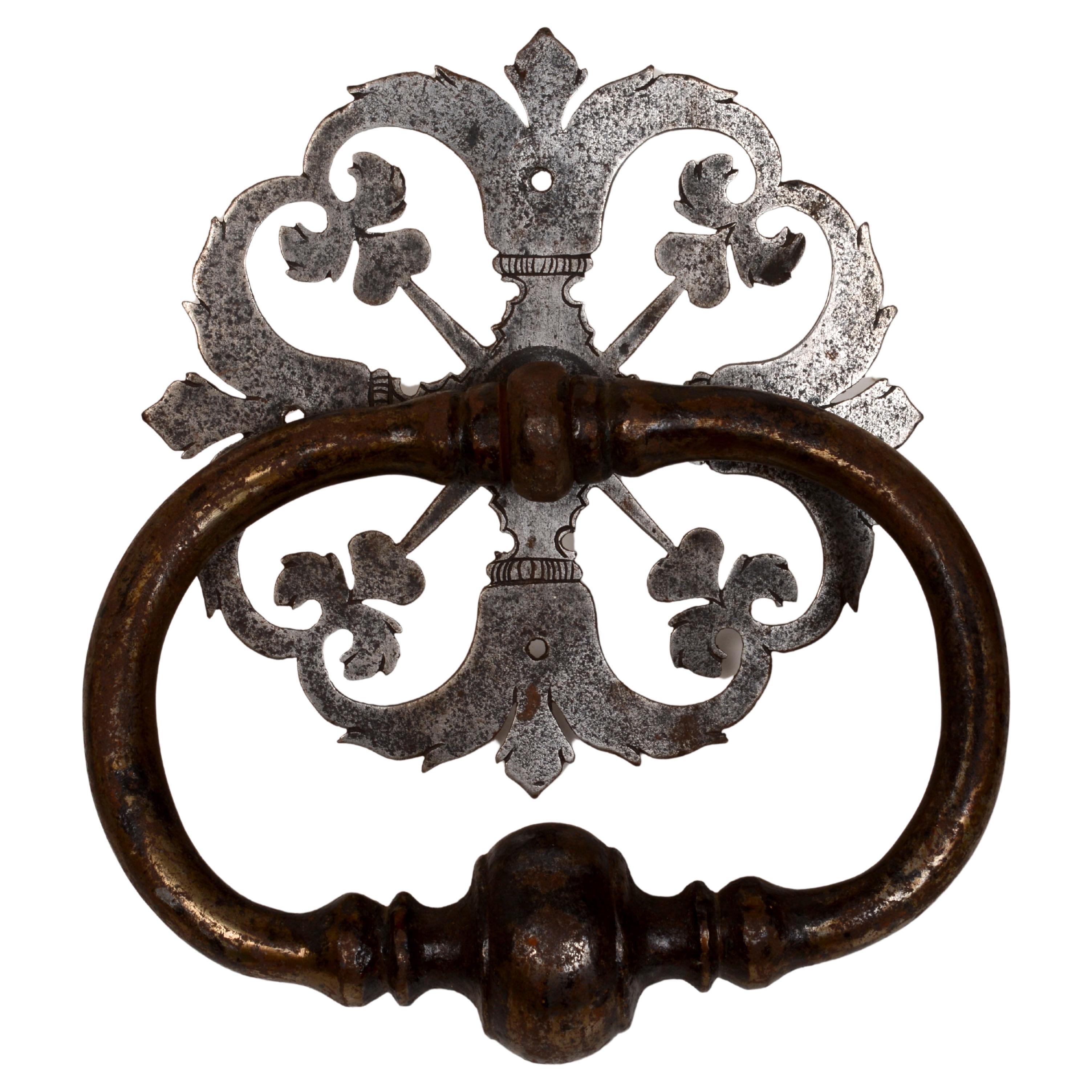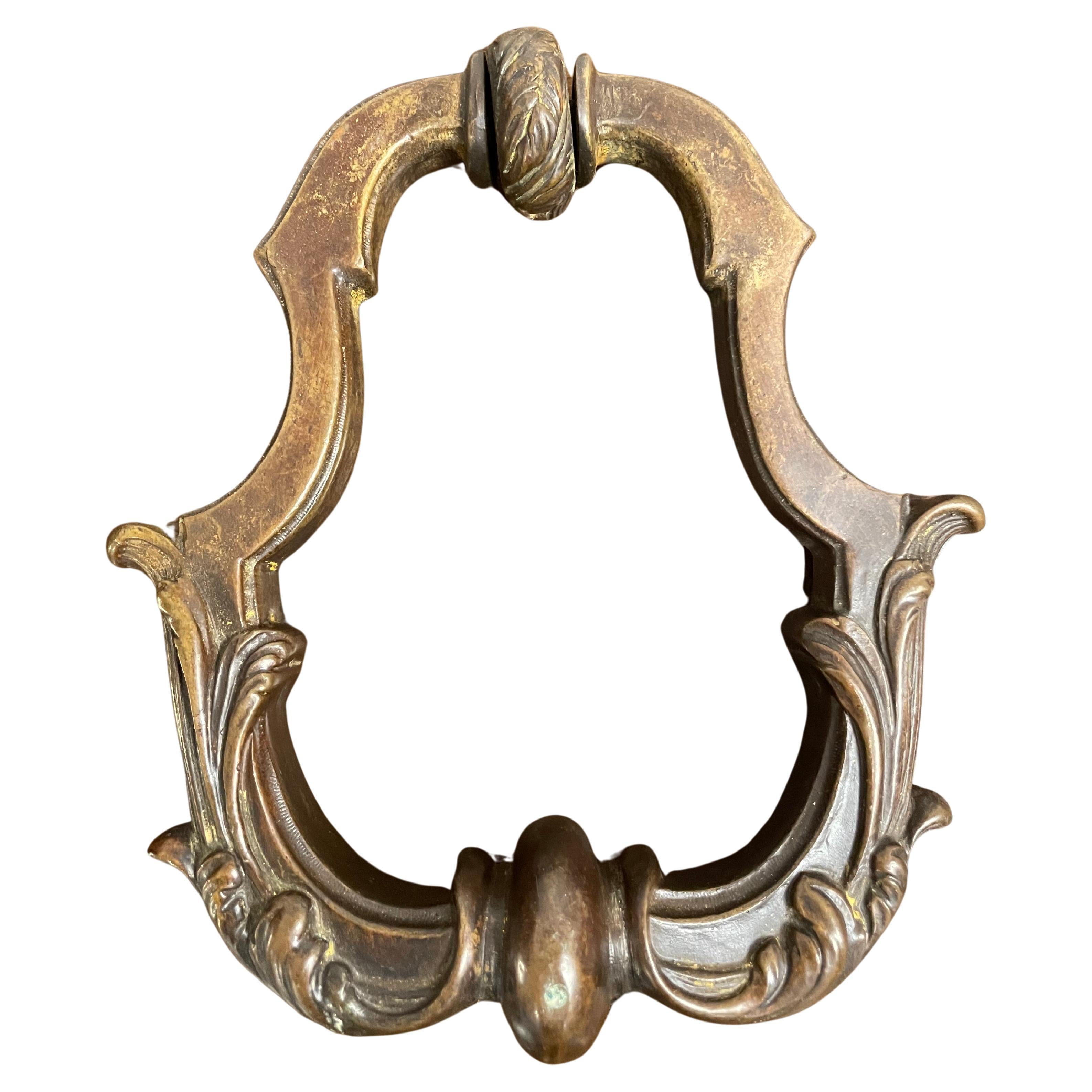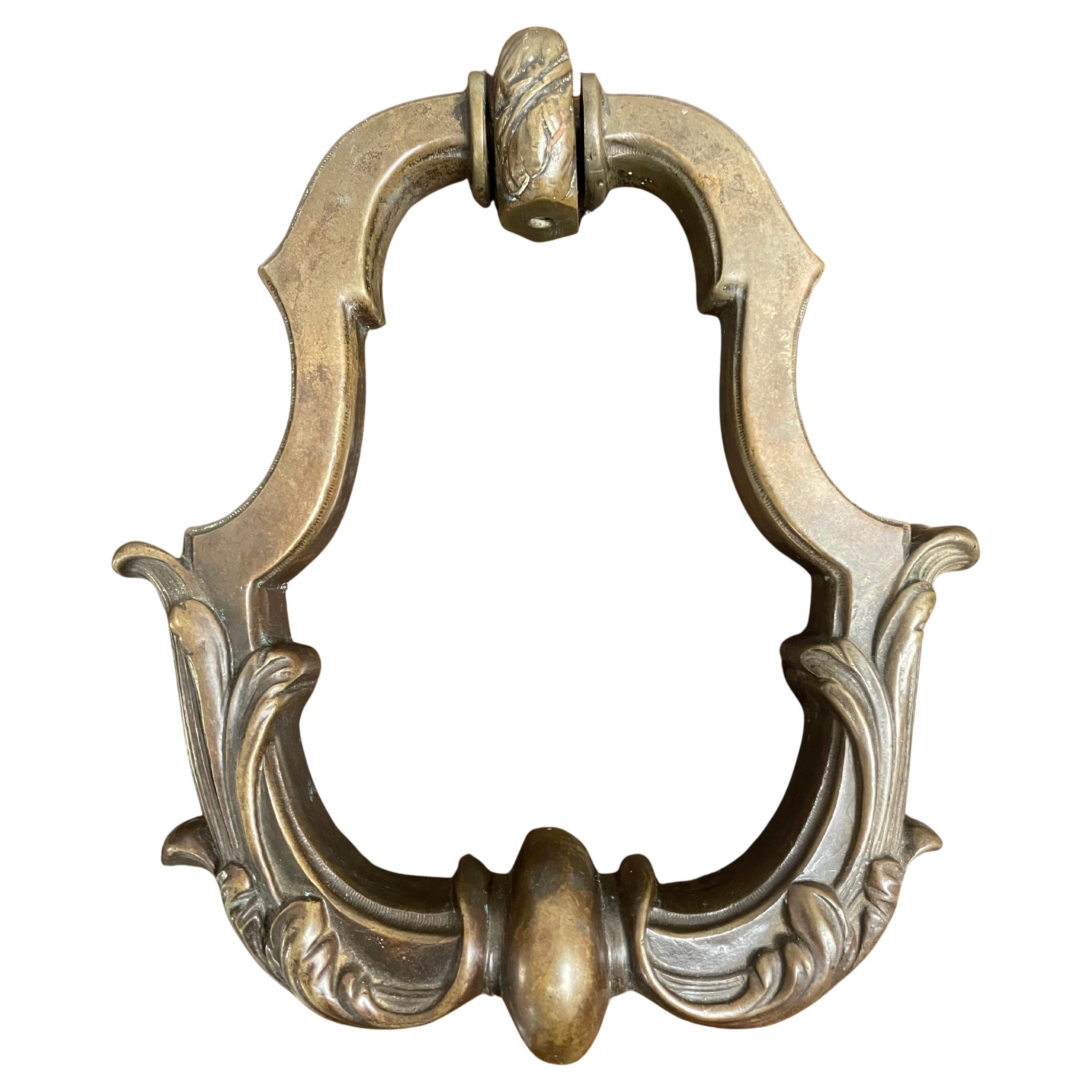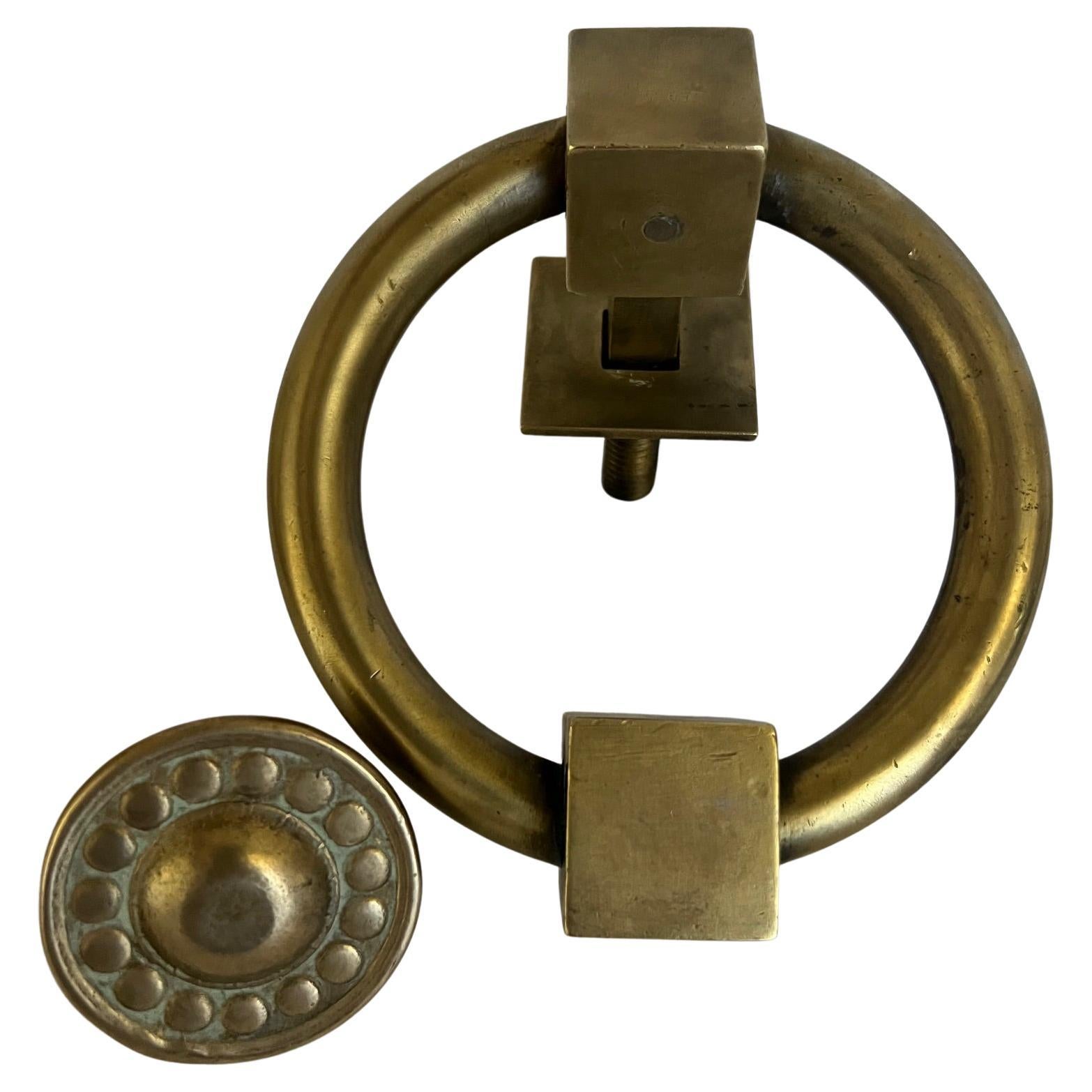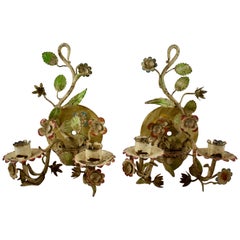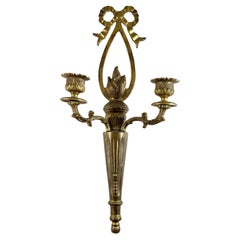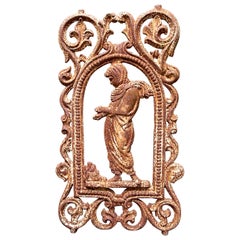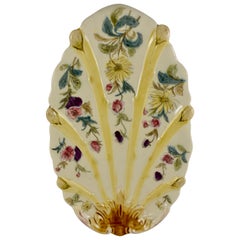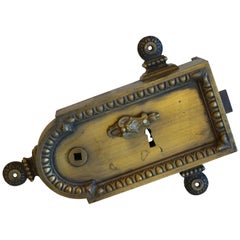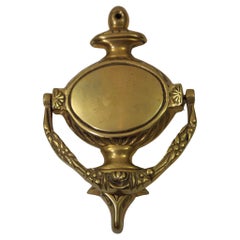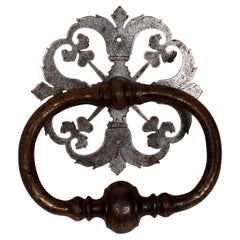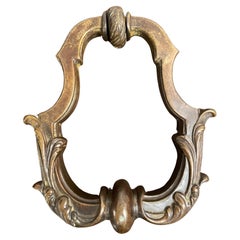Items Similar to French Beaux Arts Decor Ormolu Wreath and Floral Escutcheon Keyhole Cover
Want more images or videos?
Request additional images or videos from the seller
1 of 9
French Beaux Arts Decor Ormolu Wreath and Floral Escutcheon Keyhole Cover
$185
£139.20
€160.81
CA$261.45
A$283.89
CHF 150.34
MX$3,479.65
NOK 1,860.51
SEK 1,758.08
DKK 1,200.25
About the Item
Add an elegant Parisian touch to your decor with this beautiful antique French ormolu, Beaux Arts escutcheon, circa 1900-1910. Designed to cover a keyhole on either a salon door, armoire or writing desk, showing an ornate relief design of a floral wreath gathered with a bottom bow. Two small holes for hanging, hardware not included.
Measures: 2.25 in. W x 2.75 in L. Key opening is .75 in L
Excellent with lovely patina.
- Dimensions:Height: 2.75 in (6.99 cm)Diameter: 2.25 in (5.72 cm)
- Style:Beaux Arts (Of the Period)
- Materials and Techniques:Ormolu,Cast
- Place of Origin:
- Period:1900-1909
- Date of Manufacture:1900-1910
- Condition:Lovely Patina.
- Seller Location:Philadelphia, PA
- Reference Number:1stDibs: LU1758211832313
About the Seller
5.0
Gold Seller
Premium sellers maintaining a 4.3+ rating and 24-hour response times
Established in 1988
1stDibs seller since 2015
621 sales on 1stDibs
Typical response time: <1 hour
- ShippingRetrieving quote...Shipping from: Philadelphia, PA
- Return Policy
Authenticity Guarantee
In the unlikely event there’s an issue with an item’s authenticity, contact us within 1 year for a full refund. DetailsMoney-Back Guarantee
If your item is not as described, is damaged in transit, or does not arrive, contact us within 7 days for a full refund. Details24-Hour Cancellation
You have a 24-hour grace period in which to reconsider your purchase, with no questions asked.Vetted Professional Sellers
Our world-class sellers must adhere to strict standards for service and quality, maintaining the integrity of our listings.Price-Match Guarantee
If you find that a seller listed the same item for a lower price elsewhere, we’ll match it.Trusted Global Delivery
Our best-in-class carrier network provides specialized shipping options worldwide, including custom delivery.More From This Seller
View AllFrench Belle Époque Tôle Peinte Hand Painted Metal Floral Wall Sconces, a Pair
Located in Philadelphia, PA
A charming pair of French Tôle Peinte floral wall sconces, made of hand-painted iron, circa early 1900s.
Showing a lovely time-worn patina, the floral bouquets of petaled flowers ...
Category
Antique Early 1900s French Belle Époque Candle Sconces
Materials
Metal
French Brass Flame & Bow Candle Wall Sconce
Located in Philadelphia, PA
A brass wall sconce with a flame and bow motif, France, circa early 20th Century.
The two-arm sconce is cast in heavy bronze, with an incorporated hanging loop on the verso.
A Neo-...
Category
Early 20th Century French Belle Époque Candle Sconces
Materials
Brass
French Cast Iron Figural Flatback Rust Patina Garden Panel
Located in Philadelphia, PA
A cast iron flatback panel originally from a balcony rail in France.
Dating to the mid-late 19th century, these decorative objects were used as building or garden elements.
Heavy, weighing about 25 pounds, and aged with a beautiful patina, the panel shows a robed figure within an ornate scrolled frame.
Imagine it as a piece of outdoor sculpture, used as a fireback, turned into a table base, or framed in a garden gate.
Measures: 26.5 inches H x 15.5 inches W x 1.25 inches deep.
In very good antique condition with the desired rusted patina.
Category
Antique 1850s French International Style Architectural Elements
Materials
Iron
19th Century French Faïence Hand Painted Floral Asparagus Plate
Located in Philadelphia, PA
A scarce barbotine Majolica glazed oval Asparagus plate, France, circa 1880-1890, maker unknown.
This unusual plate shows six raised asparagus spears...
Category
Antique Late 19th Century French Aesthetic Movement Dinner Plates
Materials
Earthenware
Art Nouveau Chrysanthemum French Pewter Hand Mirror
Located in Philadelphia, PA
From the Art Nouveau period, a Pewter vanity hand mirror, France – circa 1900.
Inspired by nature, Art Nouveau is an international style that emerged in the 1890s and was popular u...
Category
Antique Early 1900s French Art Nouveau Table Mirrors
Materials
Pewter
Art Nouveau French Barbotine Majolica Shells on Paisley Pattern Oyster Plate
Located in Philadelphia, PA
A scarce French majolica oyster plate in an Art Nouveau style, maker unknown, circa 1890-1900.
Six stylized shell shaped wells are glazed in a bright olive green. The oyster wells...
Category
Antique 1890s French French Provincial Dinner Plates
Materials
Earthenware
You May Also Like
Antique French Rim Lock
Located in Dallas, TX
This antique hardware piece is made for use as a rim lock.
Measurements: 8'' L x 6'' H x 1.25'' D.
Category
Mid-20th Century European Balustrades and Fixtures
Materials
Brass
Vintage Traditional Regency Style Brass Door Knocker
Located in Moreno Valley, CA
Vintage traditional Regency Style Brass Door Knocker.Vintage traditional door knocker, made of solid brass, with oval cartouche.Gold polished cast brass door knocker in the Traditional Regency style.Simple lines suggest swags and rope twists on top of a large horizontal oval. The knocking arm is decorated with simple flowers.It will look excellent on your front door, or use it as a decorative paperweight.DIMENSIONS: 4ʺW × 1ʺD × 6ʺH.
Door knockers are more popular in Europe, mostly in England than in any other country and can be found everywhere, even in the most remote locations.Below is the history of the door knockers.
Door knockers have a long history and have been used in various cultures throughout the centuries. The exact origins of door knockers are challenging to trace, but they are believed to date back to ancient civilizations. Here's a brief overview of the history of door knockers:
1) Ancient Greece and Rome: The use of door knockers can be traced back to ancient Greece and Rome. In these civilizations, wealthy homes often had ornate metal door knockers that served both a functional and decorative purpose. These early knockers were often shaped like mythological creatures or had symbolic designs.
2) Medieval Europe: Door knockers became more prevalent in medieval Europe. During this time, they were often made of iron or brass and took on various shapes, such as animals, grotesque faces, or religious symbols. The design and material used for door knockers often indicated the status and wealth of the homeowner.
3) 17th to 19th Centuries: Door knockers continued to evolve in design and popularity during the 17th to 19th centuries. In England, for example, there was a surge in the use of decorative knockers during the Georgian and Victorian eras. Many of these designs were elaborate and reflected the fashion and artistic trends of the time.
4) Colonial America: As European settlers moved to the Americas, they brought with them the tradition of using door knockers. In colonial America, door knockers were often simpler in design, reflecting the more utilitarian style of the period.
5) 19th Century Revival: The 19th century saw a revival of interest in historical styles, including the Gothic and Renaissance periods. This influenced door knocker designs, with many reproductions and new creations inspired by earlier styles.
6) 20th Century and Beyond: In the 20th century, door knockers continued to be used, though their popularity waned with the advent of electric doorbells. However, in recent years, there has been a renewed interest in traditional and vintage design elements...
Category
Mid-20th Century English Late Victorian Doors and Gates
Materials
Brass
French 18th c Door Knocker with Original Cast Iron Knocker & Wrought Iron Back
Located in valatie, NY
French 18th c Door Knocker with Original Cast Iron Knocker and Wrought Iron Back. This hand-wrought iron door knocker with a pierced scrolling back...
Category
Antique 18th Century French Neoclassical Doors and Gates
Materials
Wrought Iron
A French Cast Bronze Door Knocker, 19th Century
Located in ARMADALE, VIC
A French Cast Bronze Door Knocker, 19th Century
Provenance: Private Australian Collection.
Dimension:
Height: 21cm
Width: 18.5cm
Depth: 5cm
Category
Antique 19th Century French Architectural Elements
Materials
Bronze
A French Cast Bronze Door Knocker, 19th Century
Located in ARMADALE, VIC
A French Cast Bronze Door Knocker, 19th Century
Provenance: Private Australian Collection.
Dimension:
Height: 22cm
Width: 18.5cm
Depth: 5cm
Category
Antique 19th Century French Architectural Models
Materials
Bronze
Vintage French Brass Door Knocker with Antique Backplate
Located in Ross, CA
Brass vintage door knocker made in France in the 1960's, paired with an older backplate from the 1930's.
Category
Vintage 1960s French Brutalist Architectural Elements
Materials
Brass
$396 Sale Price / set
20% Off
